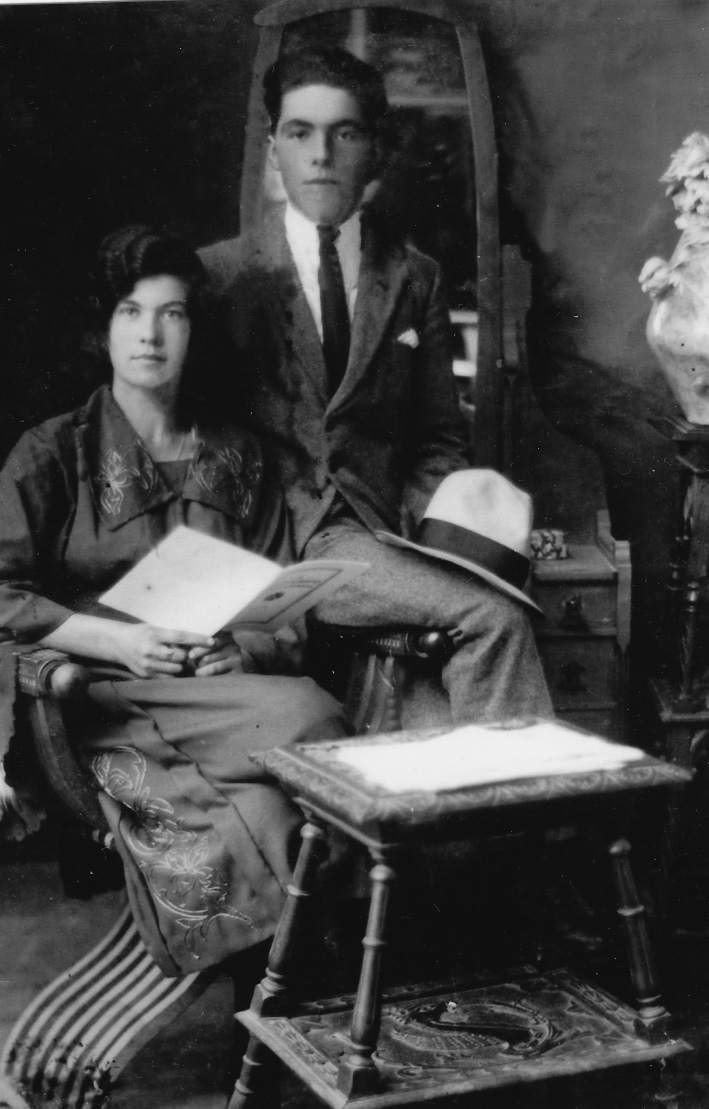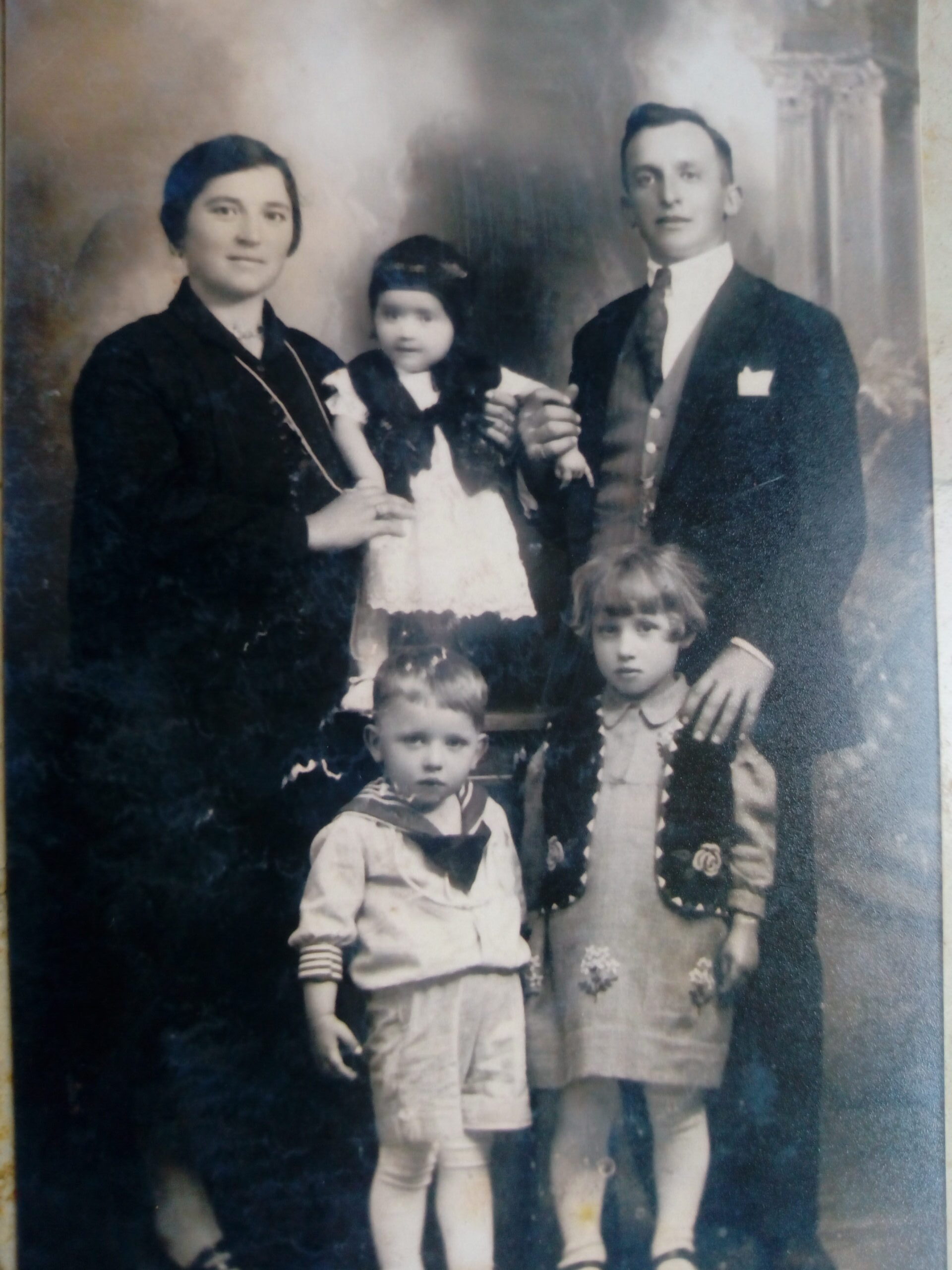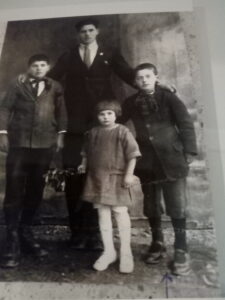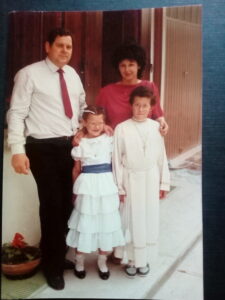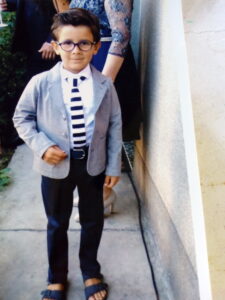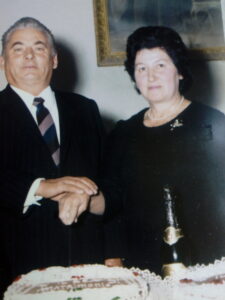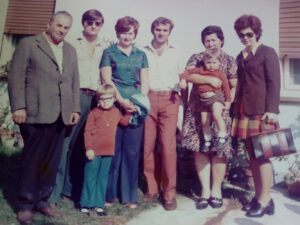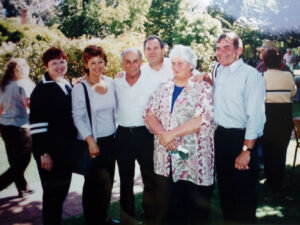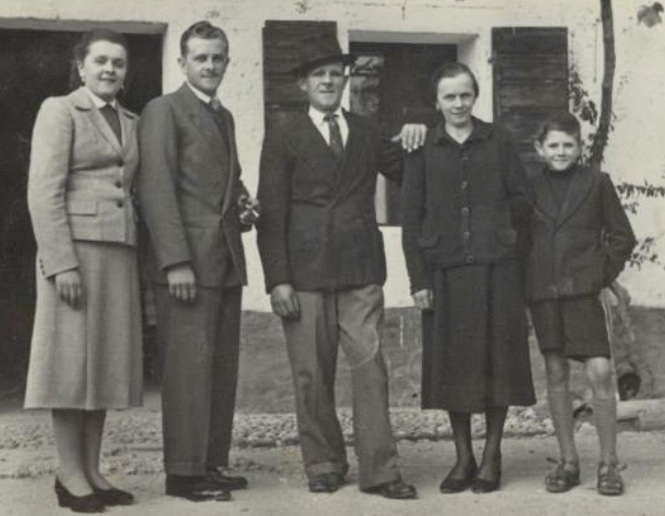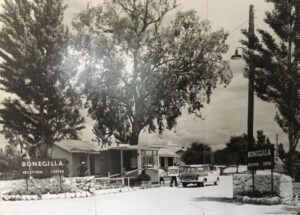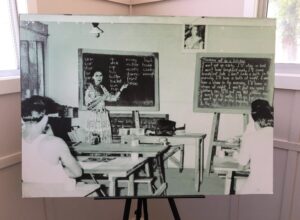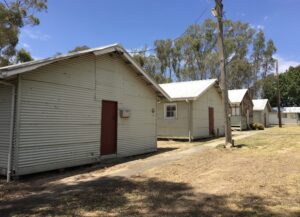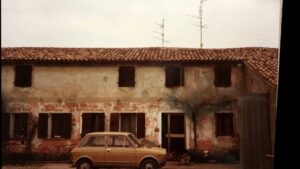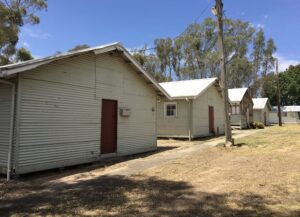We continue the stories of the Veneto pioneers who arrived in Adelaide between 1926 and 1928. The first to arrive were Francesco and Margherita Marchioro with their seven month old baby, Mary.
Francesco and Margherita Marchioro and Mary, arrived in Adelaide on 1st March 1926. They were the only married couple in the Veneto market gardener community who arrived between 1926 and 1928. The other pioneers arrived as lone men. Francesco was 24 years old and Margherita was 21 years when they married in 1925. They came to Adelaide because life in Malo in the province of Vicenza was difficult for most families on the land.
Margherita’s brother had been in Adelaide for about four years and had a terrazzo business and he employed Francesco. In 1927 the family situation changed: Lina was born and Francesco’s younger brother, Vittorio arrived. After some challenging years trying to make ends meet, Francesco and Margherita leased some land on Frogmore Road with Vittorio for market gardens. Francesco continued to work with his brother-in-law because he had severe asthma and could not work in the market gardens. For the first few years Francesco and Margherita and their two daughters lived in the west end of the city and Vittorio lived at Frogmore Road. In her interview Lina remembers that she was six or seven when her mother took her and Mary to Frogmore Road, a tram ride and a long walk to the market gardens on Saturdays and Sundays:
I remember that I used to come down with my mother and my sister Mary to work on the garden but them we’d go home at night … my uncle did the hard work there, heavy work, and my mother helped planting and picking the crop …
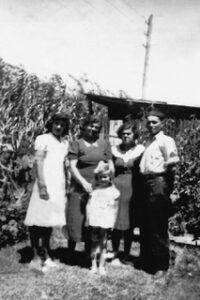
The family moved to Frogmore Road and lived with Vittorio. In 1938 Margherita and Francesco’s third daughter, Connie, was born. The family transferre to the other side of the River Torrens to Pierson Street while Vittorio and his wife Angelina stayed on Frogmore Road. Francesco had an arrangement with Tilletts Memorials, monumental masons, and polished tombstones from home while Margherita worked 16 glasshouses with the help of Mary, who did not work outside the family.
Francesco died in 1945 when he was 43 years old. Connie was nearly seven, Lina was
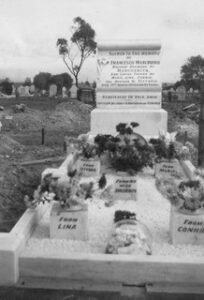
18 and Mary 20. Margherita continued to work the market gardens with Mary and also provided accommodation for other veneti including a family from Perth whose father was interned at Loveday.
Lina remembers helping her mother in winter to try and save the tomato plants when there was a frost:
I remember when the frost used to come, Mum and I would be up at 2 o’clock in the morning to wash the frost off the glass because that would have burnt the tips of the tomato plants, so we’d hose them off with the hose water, and that saved the crops, because in those days it was, I don’t know about now, but I don’t see frost around now, but then we’d have lots of frost, frosty weather, and they’d cover the grass with ice, so we had to melt the ice with the water. It was 2 o’clock in the morning you know.
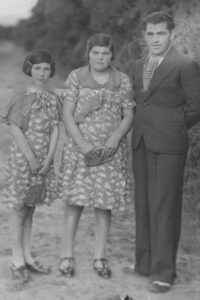
Connie also recalls her mother’s hard work:
… when Dad died, Mum had to carry on with the glasshouses because being the youngest, I was still at school. That was the only thing she knew. Eventually burying her own property also in Lockleys. Then she built her dream home. Then she retired and waited for Dad to call her on his birthday, 28th October 2001, at the age of 97 years.
Lina and Connie have kept in touch with their relatives in Malo and Monte di Malo. Lina made five visits and Connie has been six times.

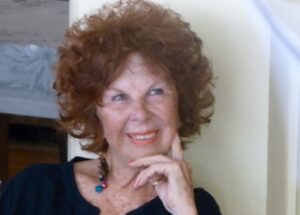
Both Lina and Connie spoke in their interviews with pride about their mother – who arrived as a 22-year old, worked hard in her market garden, and lived a very long life in Adelaide. Mary died in 1986. Lina reflects on her parents’ decision to migrate to Australia: Oh, they thought they’d only stay a few years, only a few years until they’d made enough money to live comfortably (laughs) initially. It didn’t turn out that way …
Madeleine Regan and Connie Leogivch nee Marchioro
23 August 2020
Il fratello di Margherita era già in Adelaide per circa 4 anni e aveva un business di terrazzo e Francesco lavorava per lui. Nel 1927, la situazione familiare cambiò perché la seconda figlia, Lina, è nata e il fratello di Francesco, Vittorio arrivò in Adelaide e si unì alla famiglia. Dopo qualche anno durante la depressione, la coppia con Vittorio affittarono terreno in Frogmore Road vicino altri veneti per coltivare verdure. Francesco continuò a lavorare con suo cognato perché soffriva un problema ai polmoni e non poteva lavorare il terreno. Per i primi anni Francesco e Margherita con le loro due bambine vissero nella parte della città ovest e Vittorio visse a Frogmore Road. Nella intervista con Lina si ricorda che quando aveva 6 o 7 anni la madre portò lei e la sorella al terreno col tram e una lunga passeggiata sabato e domenica al posto dove lavorava con Vittorio:
Mi ricordo che andavo con mia madre e mia sorella Mary a lavorare il terreno ma dopo si ritornava a casa al buio … mio zio fece il duro lavoro e mia madre aiutava piantando e raccogliendo il prodotto.

Nel 1938, la terza figlia di Francesco e Margherita arrivò. La famiglia visse a Frogmore Road con Vittorio prima che la sua moglie Angelina arrivò in Adelaide. Francesco e Margherita e le tre figlie si erano trasferito all’altra parte del fiume Torrens mentre Vittorio e Angelina rimasero. Francesco non stava bene di salute e trovò lavoro con Tillets Memorials (muratori monumentali) a pulire e lucidare le lapidi in casa. Margherita lavorava sempre nelle 16 serre con l’aiuto di Mary che non lavorava in altri posti.

Francesco morì nel 1945 quando aveva 43 anni. Connie aveva quasi 7 anni, Lina aveva 18 anni e Mary aveva 20 anni. Margherita continuò a lavorare come il terreno e le serre con Mary e provvedeva alloggio ad altri veneti includendo una famiglia da Perth che il marito era internato durante la guerra a Loveday (un campo di internamento circa 230 chilometri da Adelaide).

Lina si ricorda che dopo il padre morì aiutò la madre durante l’inverno:
… Mi ricordo quando la brina scendeva, mamma ed io ci alzavamo alle due del mattino per sciogliere il ghiaccio dalle serre perché avrebbero bruciato le punte delle piante di pomodori. A quel tempo scendeva molto la brina durante l’inverno. Scioglievamo il ghiaccio con spruzzi di acqua. Era molto presto alle due del mattino.
Connie anche si ricorda che la madre lavorò duro.
… quando papa morì, era necessario che la mamma continuasse a lavorare perché ero ancora una studentessa di scuola. Quello era l’unico lavoro che conosceva. Alla fine ha comprato una proprietà a Lockleys. Poi ha costruito la casa dei suoi sogni. Poi si ritirata e ha aspettato che papà la chiamasse per il suo compleanno il 28 ottobre 2001 all’età di 97 anni.
Lina e Connie rimangono in contatto con i loro parenti a Malo e Monte di

Malo. Lina è andata cinque volte. Connie ha fatto sie viaggi per vedere i suoi parenti.
Nelle interviste tutti a due Lina e Conni hanno parlato con orgoglio della loro madre che, arrivata a 22 anni, ha lavorato duro sulla terra e che ha vissuto una lunga vita. Mary morì nel 1986. Lina riflette sulle decisioni dei suoi genitori di emigrare in Australia nel 1926:

… O loro hanno pensavano che sarebbero rimasti solo pochi anni finchè non avessero guadagnato abbastanza soldi per vivere comodamente. (ride) Ma non è andata così …
Madeleine Regan e Connie Marchioro in Legovich
il 23 agosto 2020
